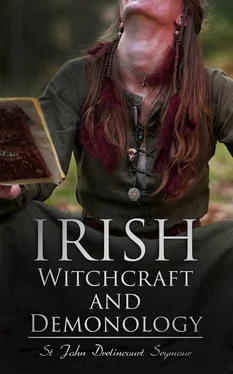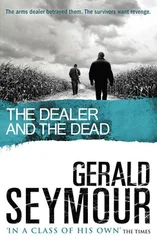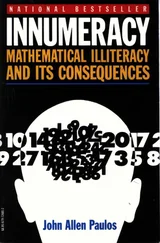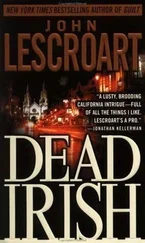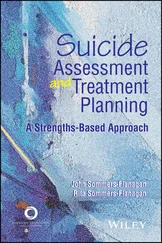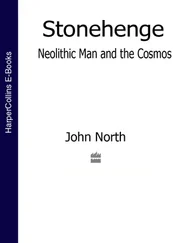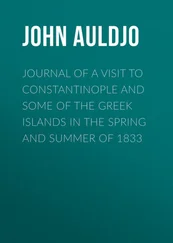St John Drelincourt Seymour - Irish Witchcraft and Demonology
Здесь есть возможность читать онлайн «St John Drelincourt Seymour - Irish Witchcraft and Demonology» — ознакомительный отрывок электронной книги совершенно бесплатно, а после прочтения отрывка купить полную версию. В некоторых случаях можно слушать аудио, скачать через торрент в формате fb2 и присутствует краткое содержание. Жанр: unrecognised, на английском языке. Описание произведения, (предисловие) а так же отзывы посетителей доступны на портале библиотеки ЛибКат.
- Название:Irish Witchcraft and Demonology
- Автор:
- Жанр:
- Год:неизвестен
- ISBN:нет данных
- Рейтинг книги:4 / 5. Голосов: 1
-
Избранное:Добавить в избранное
- Отзывы:
-
Ваша оценка:
- 80
- 1
- 2
- 3
- 4
- 5
Irish Witchcraft and Demonology: краткое содержание, описание и аннотация
Предлагаем к чтению аннотацию, описание, краткое содержание или предисловие (зависит от того, что написал сам автор книги «Irish Witchcraft and Demonology»). Если вы не нашли необходимую информацию о книге — напишите в комментариях, мы постараемся отыскать её.
Irish Witchcraft and Demonology — читать онлайн ознакомительный отрывок
Ниже представлен текст книги, разбитый по страницам. Система сохранения места последней прочитанной страницы, позволяет с удобством читать онлайн бесплатно книгу «Irish Witchcraft and Demonology», без необходимости каждый раз заново искать на чём Вы остановились. Поставьте закладку, и сможете в любой момент перейти на страницу, на которой закончили чтение.
Интервал:
Закладка:
Witchcraft never flourished to any great extent in Ireland, nor did anything ever occur which was worthy of the name of persecution—except perhaps as a sequel to the Kyteler case, and the details of which we fear will never be recovered. The first part of this statement must be taken generally and not pressed too closely, as it is based almost entirely on negative evidence, i.e. the absence of information on the subject. England has a lengthy list of books and pamphlets, while Scotland’s share in the business may be learnt from the fine series of criminal trials edited by Pitcairn in the Miscellanies of the Abbotsford Club, not to speak of other works; notwithstanding these, many cases in both England and Scotland must have been unrecorded. Ireland can produce nothing like this, for, as we have already shown, all printed notices of Irish witchcraft, with one possible exception, are recorded in books published outside the country. Nevertheless, if all likely sources, both in MS. and print, could be searched, it is highly probable that a much fuller volume than the present one could be written on the subject. The Elizabethan Act was passed on account of cases (recorded and unrecorded) that had arisen in the country; while, human nature being what it is, it seems likely that the very passing of that Statute by the Irish Parliament was in itself a sufficient incentive to the witches to practise their art. No belief really gains ground until it is forbidden; then the martyrs play their part, and there is a consequent increase in the number of the followers.
The Act of 1634 shows the opinion that was entertained in the highest circles relative to the baneful influence of witches and the menace their presence was to the safety of the community at large; in this no doubt the effect of the “evil eye,” or of the satirical verses of Bards, would be equally classed with witchcraft proper.
From various hints and incidental notices, such as in the account of the bewitching of Sir George Pollock, or in Law’s statement relative to the case of Mr. Moor, as well as from a consideration of the prevalence of the belief amongst all classes of society, it may be inferred that far more cases of witchcraft occurred in Ireland during the sixteenth and seventeenth centuries than one imagines, though in comparison with other countries their numbers would be but small. Future students of old documents may be able to bear out this statement, and to supply information at present unavailable.
To deal with the subject of witchcraft in general, with its psychology or with the many strange items which it included, would be out of place in a work exclusively devoted to one particular country, nor indeed could it be adequately dealt with in the space at our disposal; it is necessary, however, to say a few words on the matter in order to show by comparison how much pain and unhappiness the people of Ireland escaped through the non-prevalence of this terrible cult amongst them.
In the first place, to judge from the few witch-trials recorded, it may be claimed that torture as a means of extracting evidence was never used upon witches in Ireland (excepting the treatment of Petronilla of Meath by Bishop de Ledrede, which seems to have been carried out in what may be termed a purely unofficial manner). It would be interesting indeed to work through the extant Records for the purpose of seeing how often torture was judicially used on criminals in Ireland, and probably the student who undertakes the investigation will find that this terrible and illogical method of extracting the truth (!) was very seldom utilised. Nor is it at all clear that torture was employed in England in similar trials. Dr. Notestein2 thinks that there are some traces of it, which cannot however be certainly proved, except in one particular instance towards the end of the reign of James I, though this was for the exceptional crime of practising sorcery (and therefore high treason) against that too credulous king. Was its use ever legalised by Act of Parliament in either country?
In Scotland, on the other hand, it was employed with terrible frequency; there was hardly a trial for witchcraft or sorcery but some of the unfortunates incriminated were subjected to this terrible ordeal. Even as late as 1690 torture was judicially applied to extract evidence, for in that year a Jacobite gentleman was questioned by the boots. But Scotland, even at its worst, fades into insignificance before certain parts of the Continent, where torture was used to an extent and degree that can only be termed hellish; the appalling ingenuity displayed in the various methods of applying the “question extraordinary” seems the work of demons rather than of Christians, and makes one blush for humanity. The repetition of torture was forbidden, indeed, but the infamous Inquisitor, James Sprenger, imagined a subtle distinction by which each fresh application was a continuation and not a repetition of the first; one sorceress in Germany suffered this continuation no less than fifty-six times.
Nor was the punishment of death by fire for witchcraft or sorcery employed to any extent in Ireland. We have one undoubted instance, and a general hint of some others as a sequel to this. How the two witches were put to death in 1578 we are not told, but probably it was by hanging. Subsequent to the passing of the Act of 1586 the method of execution would have been that for felony. On the Continent the stake was in continual request. In 1514 three hundred persons were burnt alive for this crime at Como. Between 1615 and 1635 more than six thousand sorcerers were burnt in the diocese of Strasburg, while, if we can credit the figures of Bartholomew de Spina, in Lombardy a thousand sorcerers a year were put to death for the space of twenty-five years .3 The total number of persons executed in various ways for this crime has, according to the Encyclopædia Britannica , been variously estimated at from one hundred thousand to several millions; if the latter figure be too high undoubtedly the former is far too low.
In the persecution of those who practised magical arts no rank or class in society was spared; the noble equally with the peasant was liable to torture and death. This was especially true of the earlier stages of the movement when sorcery rather than witchcraft was the crime committed. For there is a general distinction between the two, though in many instances they are confounded. Sorcery was, so to speak, more of an aristocratic pursuit; the sorcerer was the master of the Devil (until his allotted time expired), and compelled him to do his bidding: the witch generally belonged to the lower classes, embodied in her art many practices which lay on the borderland between good and evil, and was rather the slave of Satan, who almost invariably proved to be a most faithless and unreliable employer. For an illustration from this country of the broad distinction between the two the reader may compare Dame Alice Kyteler with Florence Newton. Anybody might become a victim of the witch epidemic; noblemen, scholars, monks, nuns, titled ladies, bishops, clergy—none were immune from accusation and condemnation. Nay, even a saint once fell under suspicion; in 1595 S. Francis de Sales was accused of having been present at a sorcerers’ sabbath, and narrowly escaped being burnt by the populace.4 Much more might be written in the same strain, but sufficient illustrations have been brought forward to show the reader that in its comparative immunity from witchcraft and its terrible consequences Ireland, generally deemed so unhappy, may be counted the most fortunate country in Europe.
In conclusion, we have not considered it necessary to append a bibliography. The books that have been consulted and which have contained no information relative to Ireland are, unfortunately, all too numerous, while those that have proved of use are fully referred to in the text or footnotes of the present volume. We should like however to acknowledge our indebtedness to such general works on the subject as Sir Walter Scott’s Demonology and Witchcraft , C. K. Sharpe’s History of Witchcraft in Scotland , John Ashton’s The Devil in Britain and America , and Professor Wallace Notestein’s History of Witchcraft in England, 1558-1718 (Washington, 1911); the last three contain most useful bibliographical notices. Much valuable information with respect to the traditional versions of certain incidents which occurred in Ulster has been gleaned from Classon Porter’s pamphlet, Witches, Warlocks, and Ghosts (reprinted from The Northern Whig of 1885). For a good bird’s-eye view of witchcraft on the Continent from the earliest times we can recommend J. Français’ L’église et la Sorcellerie (Paris: Nourry, 1910).
Читать дальшеИнтервал:
Закладка:
Похожие книги на «Irish Witchcraft and Demonology»
Представляем Вашему вниманию похожие книги на «Irish Witchcraft and Demonology» списком для выбора. Мы отобрали схожую по названию и смыслу литературу в надежде предоставить читателям больше вариантов отыскать новые, интересные, ещё непрочитанные произведения.
Обсуждение, отзывы о книге «Irish Witchcraft and Demonology» и просто собственные мнения читателей. Оставьте ваши комментарии, напишите, что Вы думаете о произведении, его смысле или главных героях. Укажите что конкретно понравилось, а что нет, и почему Вы так считаете.
